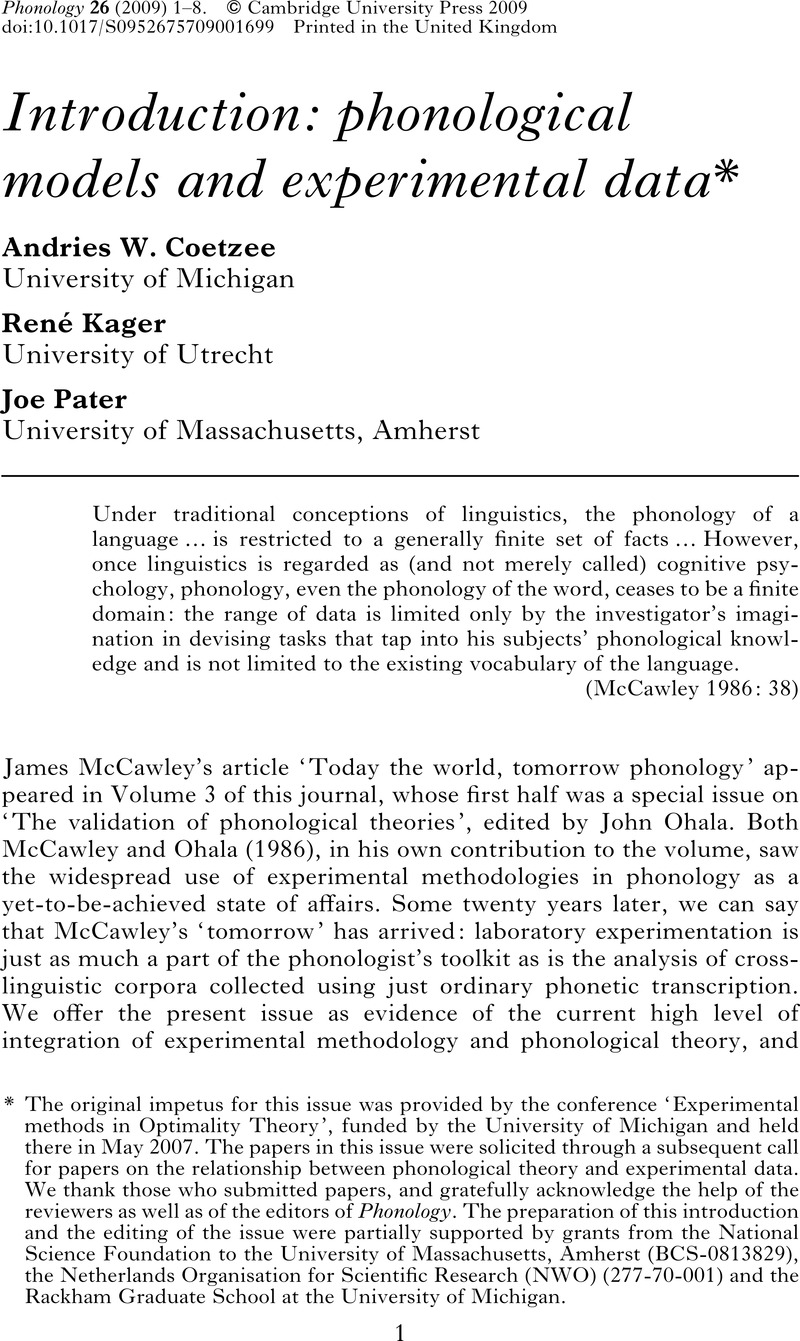Crossref Citations
This article has been cited by the following publications. This list is generated based on data provided by Crossref.
Kawahara, Shigeto
2011.
The Blackwell Companion to Phonology.
p.
1.
Kawahara, Shigeto
2015.
Comparing a forced-choice wug test and a naturalness rating test: an exploration using rendaku.
Language Sciences,
Vol. 48,
Issue. ,
p.
42.



